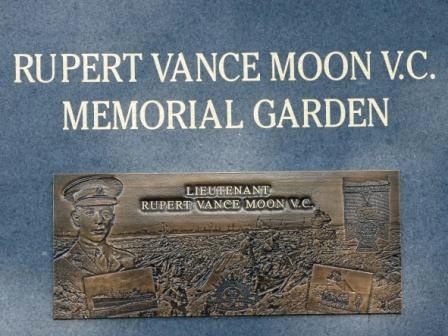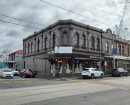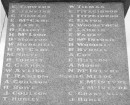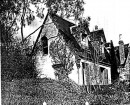Rupert Vance Moon Memorial Garden
Williams Road MOUNT DUNEED, GREATER GEELONG CITY
-
Add to tour
You must log in to do that.
-
Share
-
Shortlist place
You must log in to do that.
- Download report


Statement of Significance
This record has minimal details. Please look to the right-hand-side bar for any further details about this record.
-
-
Veterans Description for Public
Rupert Vance Moon Memorial Garden - Veterans Description for Public
The Rupert Vance Moon Memorial Garden, on Williams Road, was unveiled at Mt Duneed Cemetery on 12 May 2008 by members of 5th/6th Battalion, Royal Victoria Regiment. The garden is named after Lieutenant Rupert Moon of the 58th Battalion who won a Victoria Cross in the closing stages of the battle at Bullecourt during the First World War, France 1917.
On 12 May, the 58th were sent to clear three German positions - a large dug out, a concrete machine-gun post, and another trench. After a horrendous night of bombardment from the Germans, Moon's platoon set off fo the machine-gun emplacement, and Moon suffered his first wound. They took this position after Moon rallied his men, saying, 'Come on, boys, don't turn me down" (Bean 1941). By the time the position was secure, Moon had been wounded four times in the four stages of the advance - the face, the shoulder, the foot and leg, and, finally, with a mutilating wound to the jaw. His leadership and courage had been decisive.
Bullecourt was the site of two costly battles for the Australians, the first beginning in the bitterly cold dawn of 11 April 1917, when, after a night lying in the snow, the Australians were ordered to attack the main German defensive position, the Hindenburg Line. They were supposed to be backed up byBritish tanks and artillery, but neither of these eventuated, and when the Australians advanced, they were cut off by German artillery and machine guns. After ten hours, a withdrawal was ordered, and the surviving Australians had to fight their way back to their original positions. The 4th Brigade suffered 2339 casualties from 3000 men sent into battle; the 12th Brigade, 950 from 2000. The battle was later used by the British staff as a model of failed planning.
At the first battle of Bullecourt, Albert Jacka added a Bar to the MC he won at Pozieres. In a night reconnaissance before the battle, he brought in a German patrol who had seen him lay the start-line for the attack, and achieved this without his pistol, which had failed. Jacka's actions saved the Australians from discovery and bombardment.
The second battle at Bullecourt, from 3 to 17 May, was somewhat better planned. The 2nd Division was to take the German positions in the village of Bullecourt, and they succeeded, using 96 Vickers machine guns instead of the unreliable tanks. But even with better planning, the attack cost the four Australian divisions another 10 000 casualties.
Rupert Vance 'Mick' Moon (1892-1986) was born at Bacchus Marsh, Victoria. He spent his childhood years at Maffra in Gippsland, Victoria. He attended Kyneton Grammar School. When he finished school, Moon began working for the National Bank in Melbourne, where is father, Arthur, worked as an inspector. Before the First World War, Moon had been a member of the 13th Light Horse and 8th Infantry Regiments. He enlisted as a trumpeter in the 4th Light Horse Regiment on 21 August 1914. He embarked for Alexandria on 15 May 1915 and served at Gallipoli. Moon was commissioned as a second lieutenant in September 1916 and was posted to the 58th Battalion.
After his magnificent bravery at Bullecourt in May, and having recovered from his wounds, Moon was invested with the Victoria Cross at Buckingham Palace by King George V in August 1917. He briefly returned to Australia in March in 1918, and then in May that year returned to Europe. On 5 Feburary 1919, he was promoted to temporary captain. Moon returned to Australia in June, with his AIF appointment ending on 4 October that year, as an honorary captain. He resumed his work at the bank, but left a few years later to work for wool brokers in Geelong.
Captain Moon also served in the Second World War. He was rejected for the AIF in 1940 because of his physical fitness, but joined the 6th Victorian Battalion of the Home Guard, the RSL Volunteer Defence Corps in 1942. His medical records tells the tale. He answered yes to questions about whether he had suffered neurasthenia or nervous breakdown, dysentery, malaria, broken bones, gun shot wounds, shell shock and gas poisoning. Nowhere on the form does Moon say that the surgery (repair to jaws 1917, removal of pieces of bone from tongue 1920) was the result of his VC action.
He married Susan Vincent on 18 December 1931 and had one son and a daughter. He lived for many years at Calder Park, Mt Duneed, and died at Barwon Heads in 1986, aged 94.
-
-
-
-
-
PREFABRICATED IRON COTTAGE
 Victorian Heritage Register H1131
Victorian Heritage Register H1131 -
Rupert Vance Moon Memorial Garden
 Vic. War Heritage Inventory
Vic. War Heritage Inventory -
Prefabricated Iron Cottage
 National Trust H1131
National Trust H1131
-
-









